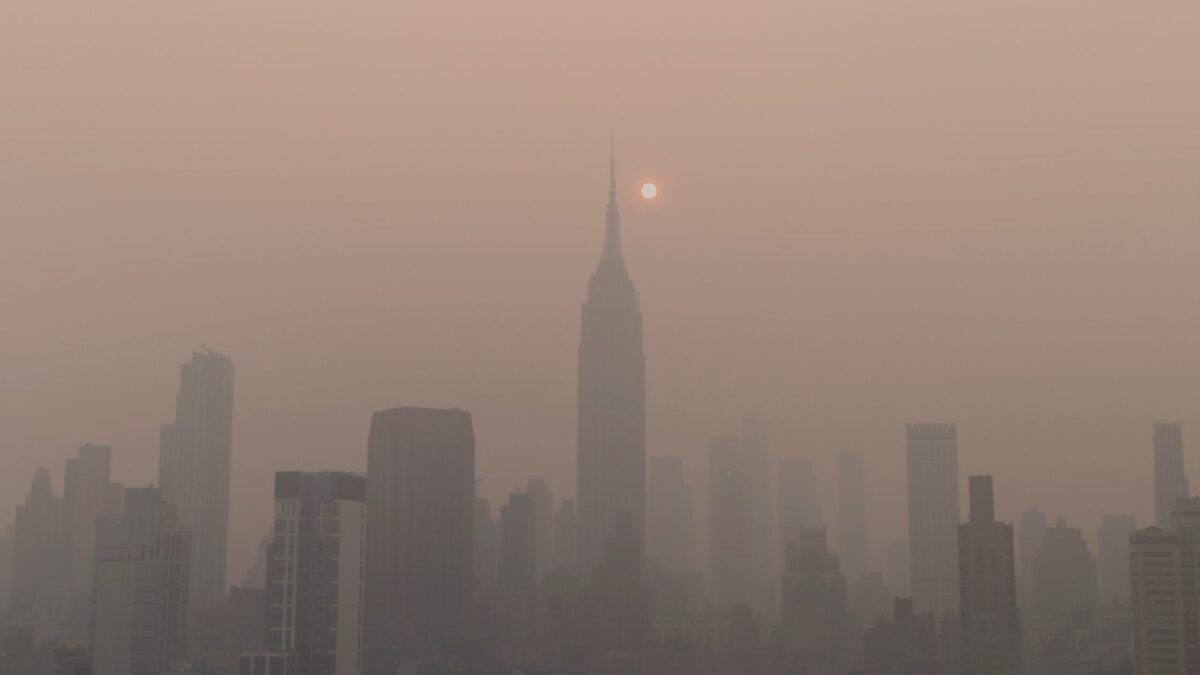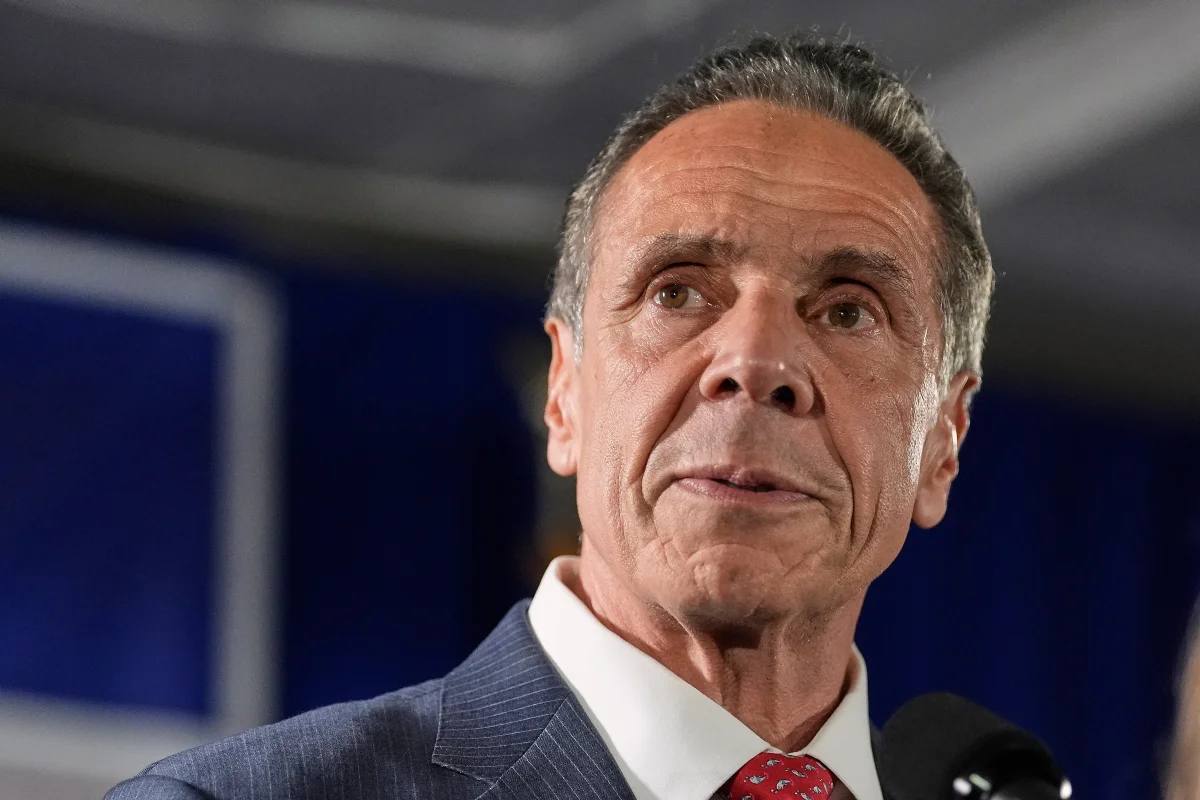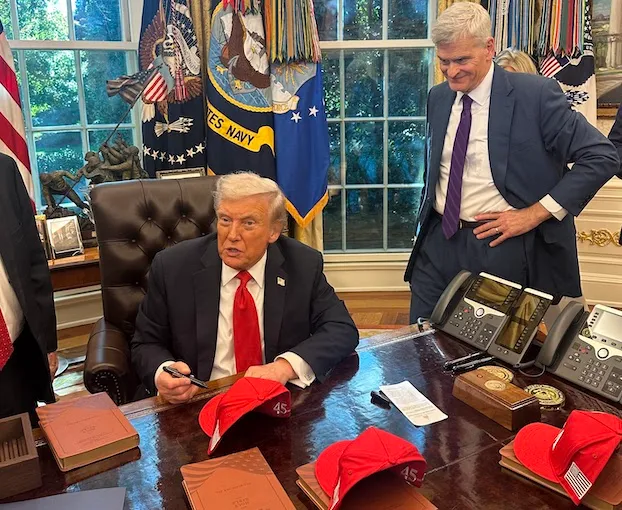Copyright reason

The sky turns a rusty orange. The sun dims behind a thick veil of smoke. For millions of Americans, even ones far from wildfire-prone lands, this eerie scene is no longer rare. Extreme wildfires have doubled in frequency and intensity in recent decades, and their smoke is erasing decades of gains in clean air. Fine particulate matter from wildfire smoke—tiny particles that lodge deep in the lungs—is now one of the most harmful forms of air pollution in America. So you might assume that our nation's clean air laws are working to protect us from such emissions. But here's the paradox: While the Clean Air Act seeks to reduce harmful pollution, it largely overlooks the biggest and fastest-growing source of that pollution: wildfires. Worse, the Clean Air Act makes it harder to use the very tool that scientists and land managers agree is essential for reducing catastrophic fires and the choking smoke they produce. Under the act's "exceptional events" rule, regulators may exclude pollution from certain natural disasters when deciding whether an area meets federal air quality standards. Wildfire smoke almost always qualifies for that exemption. Under current rules, wildfires are presumed "not reasonably controllable or preventable," which means that when a megafire blankets a city in dangerous haze, those emissions are essentially excused after the fact. The planned, carefully controlled burns that can prevent megafires—known as prescribed fires—rarely qualify. They are, by definition, intentional and therefore generally fail to meet the Clean Air Act's requirements for exceptional events. The result is a perverse incentive: The uncontrolled wildfire that blackens the skies is given a regulatory free pass, while the low-intensity prescribed fire that could have reduced the risk of that disaster faces red tape and potential penalties. As a result, states become reluctant to issue burn permits, and fire practitioners scale back projects rather than risk running afoul of federal standards. The EPA has recognized this problem and in 2016 revised its rules to, in theory, allow prescribed fires to qualify as exceptional events. Yet the process has proven unworkable. To satisfy Clean Air Act rules, a prescribed fire must somehow be deemed "not reasonably controllable or preventable" and "unlikely to recur"—criteria that controlled, regularly scheduled burns cannot truly meet. A Georgia forestry official recently testified that the state submitted 89 exceptional event demonstrations for prescribed fires in recent years; the EPA has yet to approve or deny any of them. Nationwide, since the rule was updated, only one prescribed fire has been approved for an exemption—a telling measure of how onerous the process is. Prescribed fire is hardly experimental. For centuries, Indigenous peoples used it to keep forests resilient. Today, fire ecologists and land managers rely on it to thin dense fuels and restore healthier landscapes. The benefits are well documented. One recent study found that in California—where wildfire smoke is among the largest sources of fine-particle pollution—areas treated with prescribed fire burned less severely and emitted less fine particulate matter overall, even after accounting for the smoke from the prescribed fires themselves. The difficulty of qualifying a prescribed burn as an exceptional event makes the existing rule "an ineffective tool to discount emissions from prescribed fire," according to a 2024 report by a coalition of fire experts, tribal officials, and forestry practitioners. Consequently, the severe health and economic harms of worsening wildfire smoke, they conclude, are "largely neglected, if not inadvertently caused by the Clean Air Act regulations themselves." Last year, the EPA tightened the national standard for fine particulate matter, which only heightens the urgency of finding a workable path to credit prescribed burns for the cleaner air they help secure. Fortunately, reform may be on the horizon. Last month, Congress considered draft legislation that would streamline how prescribed burns can be treated under the Clean Air Act. The Wildfire Emissions Prevention Act would give states and the EPA the flexibility to recognize prescribed burns as actions that reduce wildfire risk and therefore qualify as "exceptional events," even though they are intentional and recurring. Instead of forcing prescribed fire into a rule designed for natural disasters, the bill would create a clear, simplified process for states to exclude smoke from these burns. Other changes could help as well. This week, the Senate Agriculture Committee approved a separate bill—the Fix Our Forests Act—that would encourage greater use of prescribed fire by speeding up project approvals in high-risk fire areas and reducing litigation obstacles that often stall or derail forest restoration efforts. The committee passed the legislation with overwhelming bipartisan support. Such reforms are urgently needed. Prescribed fire is one of the most effective tools we have to break the cycle of catastrophic wildfires and choking smoke. Clean air rules and other environmental regulations should make it easier, not harder, to use it.



